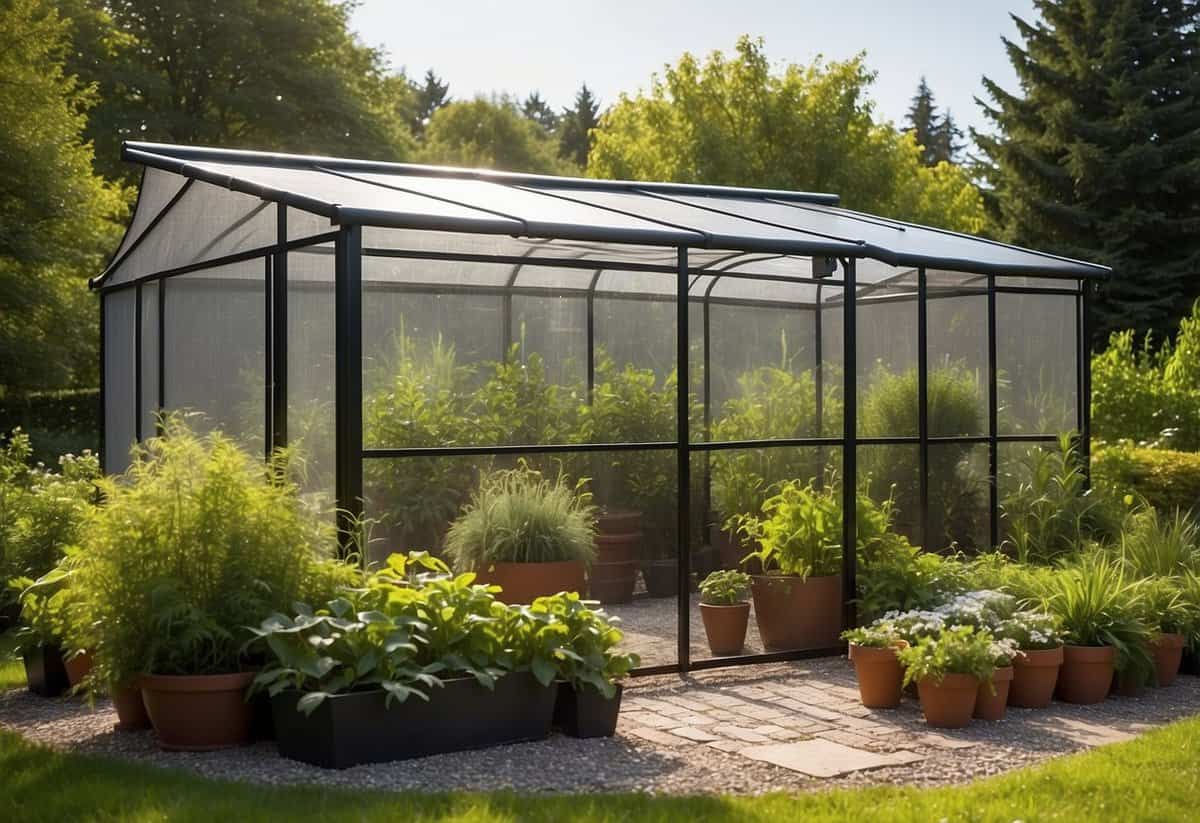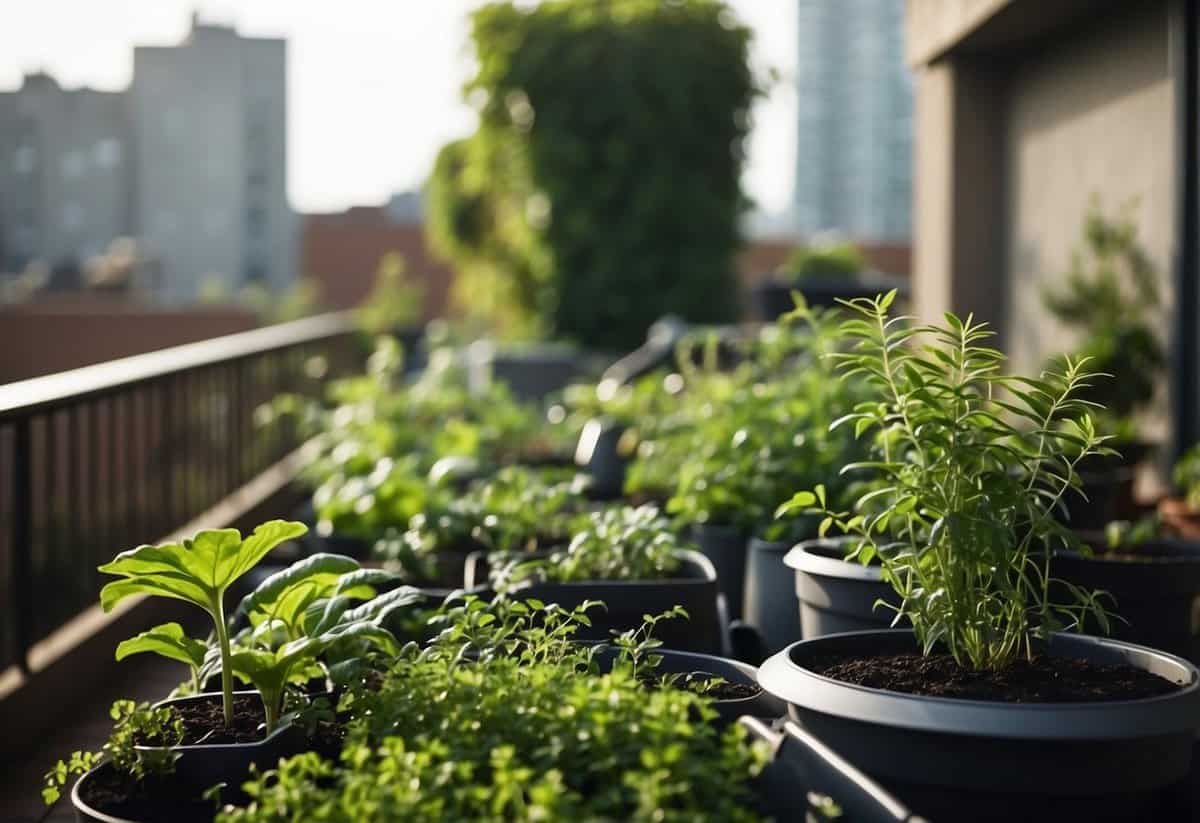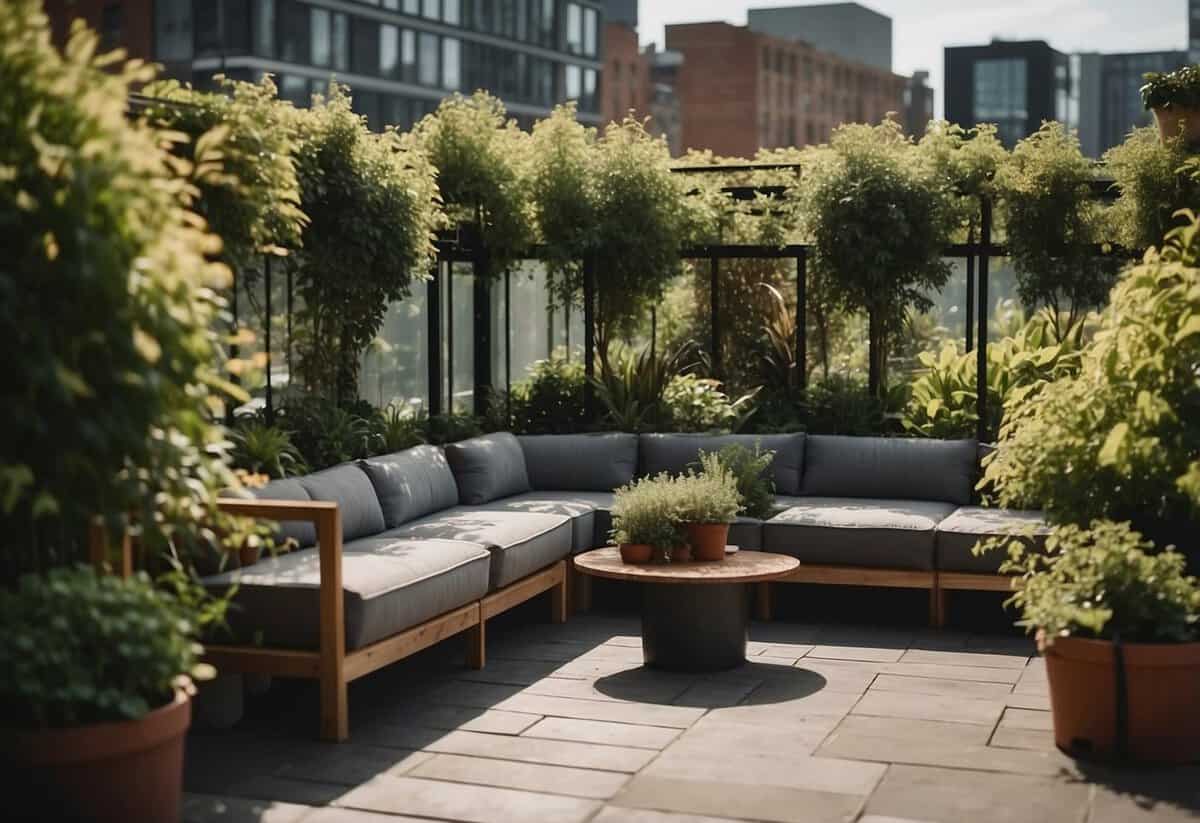Roof Garden Tips: Transform Your Outdoor Space
Thinking about starting a roof garden? It’s a great way to utilize your rooftop space creatively while adding some greenery to your surroundings. A roof garden not only enhances the beauty of your home but can also provide fresh herbs and vegetables.

Your journey to a successful roof garden can be enjoyable and satisfying. With the right tips and some effort, you’ll transform your rooftop into a thriving green oasis.
1) Choose Lightweight Containers

Using lightweight containers is key for a rooftop garden. They help reduce the load on your roof and make it easier to move your plants around.
Opt for materials like plastic, resin, or fabric. These materials are sturdy yet light, allowing you to rearrange your garden as needed.
Lightweight containers also come in various sizes and shapes, so you can find ones that suit your garden’s design.
2) Install Proper Drainage

Proper drainage is key to a successful roof garden. It prevents water buildup that can damage your plants and the building.
Start by installing channels or drains to direct water away from the rooftop. Use raised beds or containers with drainage holes to help water flow.
Also, consider integrating a high-quality waterproofing system. Waterproof membranes can protect your roof from leaks and water damage, making sure your garden thrives.
3) Opt for Drought-Resistant Plants

For a rooftop garden, choose plants that can handle dry conditions. This can help minimize the need for frequent watering.
Consider plants like sedums or stonecrops, which are popular choices for green roofs and can survive with little water.
Vegetables like tomatoes, peppers, and cucumbers also do well and can thrive in rooftop conditions.
For more ideas, check out some drought-tolerant plant selections.
4) Utilize Vertical Space

Vertical gardening is perfect for small rooftop areas. You can grow upwards instead of outwards. This saves space and makes your garden look lush.
Use structures like trellises and wall planters. These support climbing plants and add a stylish element. Hanging baskets are also great for more planting room.
By optimizing vertical space, your rooftop garden will thrive and look beautiful. This method allows more room for a variety of plants and adds dimension to your green space.
5) Use Quality Potting Soil

Using quality potting soil is crucial for your rooftop garden. It provides the necessary nutrients for your plants to grow strong and healthy. Look for a mix that is designed for container gardening.
Rooftop gardens can dry out quickly. A lightweight and nutrient-rich potting mix ensures that your plants retain moisture without becoming waterlogged.
Avoid using regular garden soil as it can be too dense. It may also contain pests or diseases. High-quality potting soil helps prevent these issues, giving your plants the best start.
6) Incorporate Edible Plants

Adding edible plants to your rooftop garden can be fun and rewarding. Herbs like basil and mint are easy to grow and great for beginners. They add fresh flavors to your meals.
Vegetables such as tomatoes and peppers thrive in containers. They need lots of sunlight, so choose a sunny spot. With care, you can enjoy fresh, homegrown produce.
For a touch of sweetness, grow strawberries. They are compact and perfect for small spaces. You’ll love picking fresh berries right from your rooftop garden.
7) Provide Wind Protection

Wind can be tough on your rooftop garden. To help, use windbreaks like trellises or mesh screens. These create barriers that reduce wind speed and protect your plants.
You can also plant taller shrubs or trees around the edges. They act as natural shields and make the garden more attractive. Secure your plants with stakes to keep them from getting damaged by strong gusts.
For more tips on windproofing, visit Windproofing Your Rooftop Garden.
8) Plan for Seasonal Changes

Keep an eye on the weather. Different seasons need different actions in your rooftop garden.
In spring, clean up debris and remove dead plants. This prepares your garden for new growth.
As fall approaches, start planting crops suited for cooler weather. Don’t forget to apply mulch to insulate plant roots.
Winter requires protection from harsh cold. Use covers or blankets to keep sensitive plants safe.
9) Install an Irrigation System

An efficient irrigation system can keep your roof garden thriving. A drip irrigation system works best for rooftop conditions. It delivers water directly to the plants’ roots, reducing water waste.
Connect the mainline to your water source using a secure garden hose. Use timers and intelligent controls to automate your watering schedule. Make sure to avoid any leaks for optimal performance.
10) Add Comfortable Seating

Adding comfortable seating to your roof garden creates a cozy place to relax and enjoy the view. Opt for weather-resistant materials like teak, wicker, or metal for durability.
Place chairs, benches, or hammocks in shaded areas to make them more inviting. Don’t forget to add cushions and pillows for extra comfort. Consider placing seating near plants or flowers for a more enjoyable atmosphere.
Benefits of a Roof Garden

A roof garden can significantly improve your environment while enhancing your well-being. Let’s explore the specific impacts it has on the environment and on your health.
Environmental Impact
A roof garden can help lower the temperature around your home. Plants absorb sunlight and provide shade, which reduces the heat on your roof and in the surrounding air. This can make your home cooler and more comfortable.
Green roofs also play a role in improving air quality. Plants capture pollutants and produce oxygen, creating a healthier atmosphere. Rooftop gardens can reduce greenhouse gases in urban areas.
These gardens support stormwater management by absorbing rainfall, which lowers the risk of flood. The soil and plants can capture rainwater and keep it from becoming runoff. This can be very helpful in cities with limited natural green spaces.
Health and Wellness
Tending to a roof garden can be very relaxing and can reduce stress. Gardening has been shown to improve mental health by lowering anxiety and promoting a sense of calm. Spending time with plants can also enhance your mood.
Growing vegetables and herbs on your roof can provide fresh and nutritious food. By eating what you grow, you can enjoy healthier meals and reduce your reliance on store-bought produce. It’s satisfying to know exactly where your food comes from.
Exercise is another benefit of maintaining a roof garden. Activities such as planting, watering, and harvesting can contribute to your daily physical activity. This keeps you active and can improve your overall fitness. Working in your garden allows you to enjoy the outdoors and fresh air.
By creating a roof garden, you invest in both your environment and your personal well-being, making it a rewarding experience in many ways.
Roof Garden Design Tips

Creating a roof garden not only adds greenery to your space but also provides a peaceful escape from city life. Here’s some advice to help you design a stunning rooftop oasis.
Choosing the Right Plants
Select plants that can handle the unique conditions on a roof. Drought-tolerant plants, like succulents and lavender, are good choices because they don’t need much water. Wind-resistant plants, such as ornamental grasses, can withstand the breezy conditions often found on rooftops.
For greenery that climbs, consider ivy or climbing hydrangea. These plants can transform walls into lush, green surfaces. Herbs and vegetables are great for those who want a functional garden. Start with easy-to-grow options like basil, cherry tomatoes, and mint.
Ensure you pick lightweight containers to avoid adding too much weight to your roof. Containers made of plastic or fiberglass are good choices.
Maximizing Space
Maximizing space is vital on a rooftop garden. One way to do this is to utilize vertical space. By using wall planters or hanging baskets, you can add more plants without taking up floor space.
Railing planters provide another convenient way to use space efficiently. They can hold flowers, herbs, or even small vegetables. This keeps your floor clear and adds greenery at eye level.
Consider adding compact furniture that can easily be moved around or put away when not in use. Foldable tables and chairs are great options. Also, think about multipurpose furniture like benches that double as storage.
Finally, don’t overlook the importance of good flooring. Choosing a type that fits your budget and matches the climate will enhance the overall look and feel of your garden.







